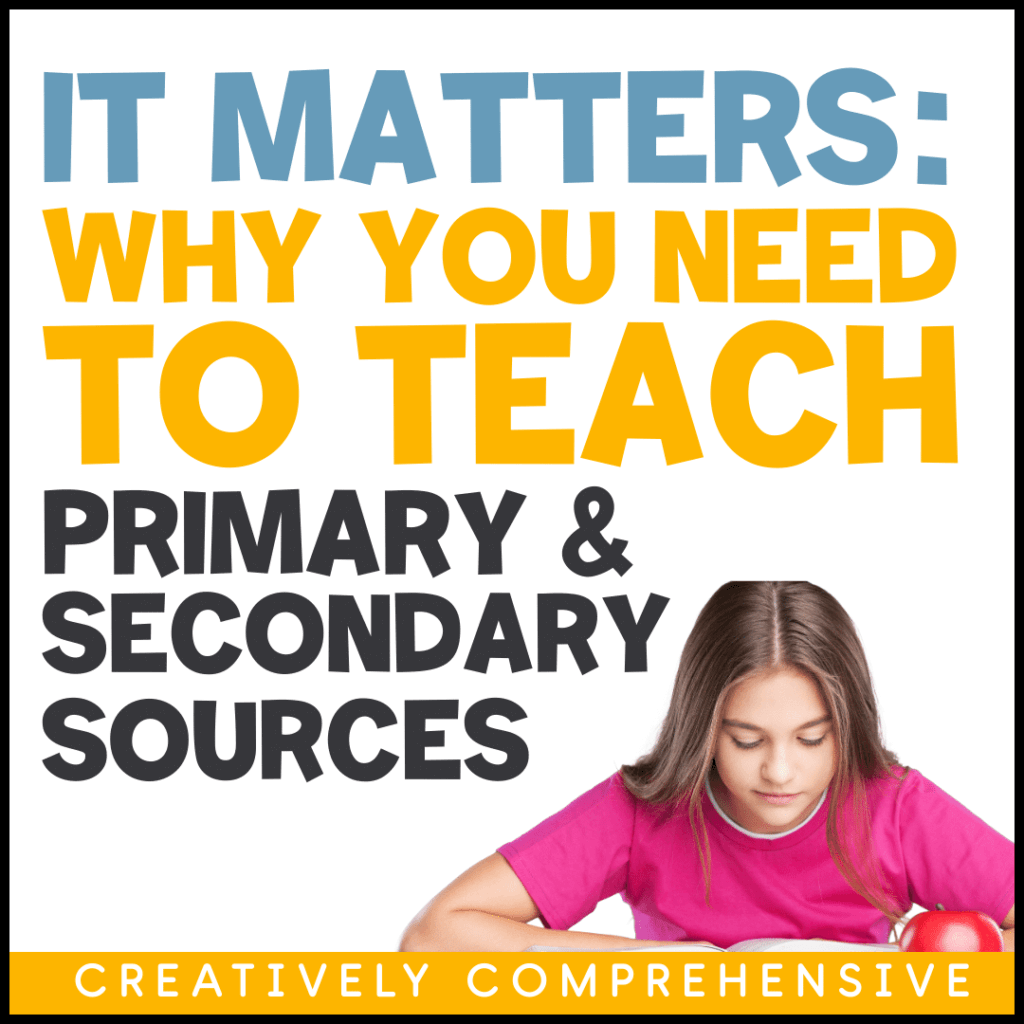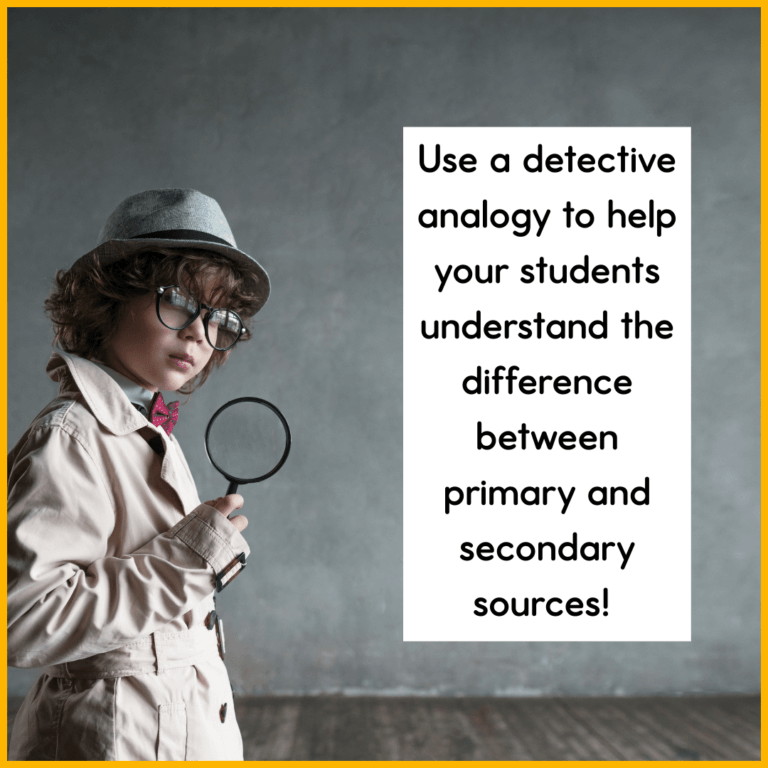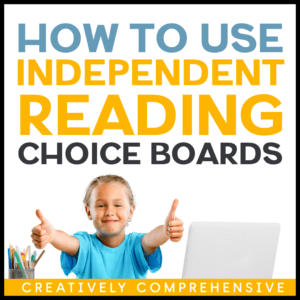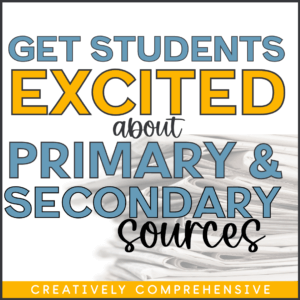It Matters: Why You Need to Teach Primary and Secondary Sources
Analyzing primary and secondary sources is a necessary skill to be a productive member of society. The more exposure students have to different types of sources, the better! Unfortunately, this can be a very dry topic to teach. The key is to show your students that understanding and evaluating types of sources is a valuable skill they will use beyond the classroom walls! Here are some tips to get you started.

Are you a less reading, more action type of teacher? Grab the Primary and Secondary Sources Activity Kit to get everything you need to engage your students in this subject!
Our students are growing up in a time where from the moment they wake up until their eyes close at bedtime, they are consuming content. This type of nonstop media absorption has far more ramifications than I can fit into this post, so I’ll just focus on one: what tools do our students have to think critically and evaluate what they’re viewing? Quite likely, the answer is “none.” Where does this skill develop? With an understanding of types of sources!
The Basics
Need a refresher on the types of sources? Primary sources are original documents or items such as photos and artifacts. These give us the firsthand story of an event, time period, or idea. Secondary sources look at primary sources and evaluate them. They can be books, articles, or documentaries that explain what is in the primary source. Both types of sources are necessary when it comes to studying events, past or present. In particular with secondary sources, we must analyze the perspective and purpose of the content being shared.
I get why it’s important for research, but how does it help students become better content consumers? Have you taken a scroll on the ol’ Facebook lately? If so, you may have noticed a lot of debunked studies, fake news, and misattributed quotes being spread like wildfire. Misinformation moves quickly because (unfortunately) most people don’t stop to think critically about what they read- they just press SHARE. When you think about it, dear teacher pal…do we want to grow old in a world with more or less shared information? If you answered the way I think you did, teaching students how to analyze primary and secondary sources is the very first step to making that happen.

Do you have a lot of visual learners? Grab this free set of posters featuring real examples of the most commonly used primary and secondary sources.
Understanding the Difference
I won’t lie to you. Understanding the differences between primary and secondary sources can be a tricky concept for upper elementary learners. While it is helpful to categorize different types of sources, it gets confusing when certain types of materials can be either primary or secondary, depending on their characteristics. For example, an autobiography written by a celebrity would be a primary source, but a book about that same celebrity’s achievements or failures written by someone else would be a secondary source.
I’ve found that students can understand the concept of types of sources if they think about it like a mystery. Primary sources are like raw evidence a detective has. They give you information straight from the source, such as interviews, diaries or old documents. Secondary sources are more like what the detective concludes from the evidence. They tell you what people think about the primary sources.
Students will need to rely on both types of resources when conducting any research. The skills they use to evaluate these sources will also serve them in thinking critically about other content they consume.

Simple Ideas to Implement Today!
It may seem difficult or time-consuming to teach about analyzing sources- but I assure you it isn’t! There are even some simple strategies you can implement immediately in your classroom to help your students think more critically about sources:
- Every time you read a text selection, get in the habit of asking students why it was written, who it was written for, and when it was written. This simple shift will get your students thinking about the importance of perspective!
- Share a “photo of the day” of an important historical event during your morning meeting. Have students discuss what they can learn from looking at the photograph and applying their prior knowledge and perspective.
- Fact check: Encourage students to share things they’ve heard on the news or in their apps and cross check the sources with them. This type of open dialogue can go a long way towards halting the spread of misinformation!
Need More Resources?

Over 3000 teachers have used my Primary and Secondary Sources activities in their classroom with great results! Head to TPT to see their reviews as well as a full preview of the product, or grab right now from my website store:



